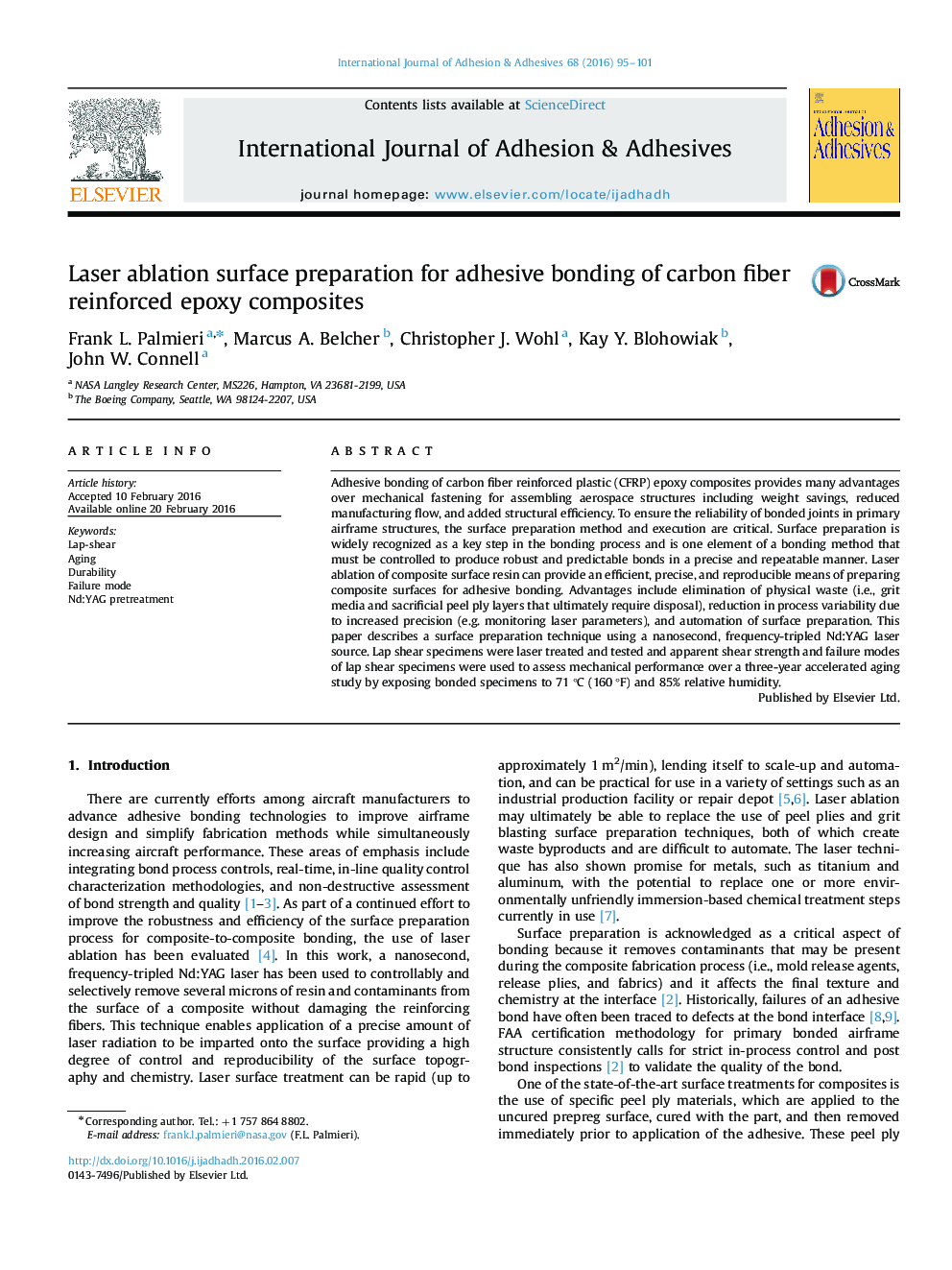| Article ID | Journal | Published Year | Pages | File Type |
|---|---|---|---|---|
| 7171061 | International Journal of Adhesion and Adhesives | 2016 | 7 Pages |
Abstract
Adhesive bonding of carbon fiber reinforced plastic (CFRP) epoxy composites provides many advantages over mechanical fastening for assembling aerospace structures including weight savings, reduced manufacturing flow, and added structural efficiency. To ensure the reliability of bonded joints in primary airframe structures, the surface preparation method and execution are critical. Surface preparation is widely recognized as a key step in the bonding process and is one element of a bonding method that must be controlled to produce robust and predictable bonds in a precise and repeatable manner. Laser ablation of composite surface resin can provide an efficient, precise, and reproducible means of preparing composite surfaces for adhesive bonding. Advantages include elimination of physical waste (i.e., grit media and sacrificial peel ply layers that ultimately require disposal), reduction in process variability due to increased precision (e.g. monitoring laser parameters), and automation of surface preparation. This paper describes a surface preparation technique using a nanosecond, frequency-tripled Nd:YAG laser source. Lap shear specimens were laser treated and tested and apparent shear strength and failure modes of lap shear specimens were used to assess mechanical performance over a three-year accelerated aging study by exposing bonded specimens to 71 °C (160 °F) and 85% relative humidity.
Keywords
Related Topics
Physical Sciences and Engineering
Engineering
Mechanical Engineering
Authors
Frank L. Palmieri, Marcus A. Belcher, Christopher J. Wohl, Kay Y. Blohowiak, John W. Connell,
